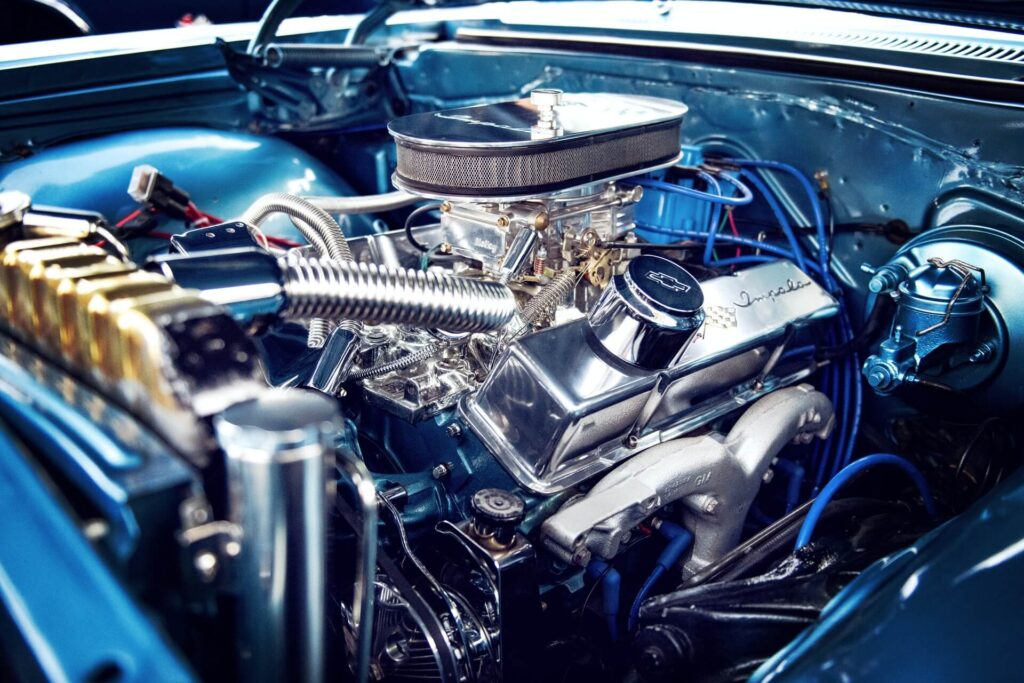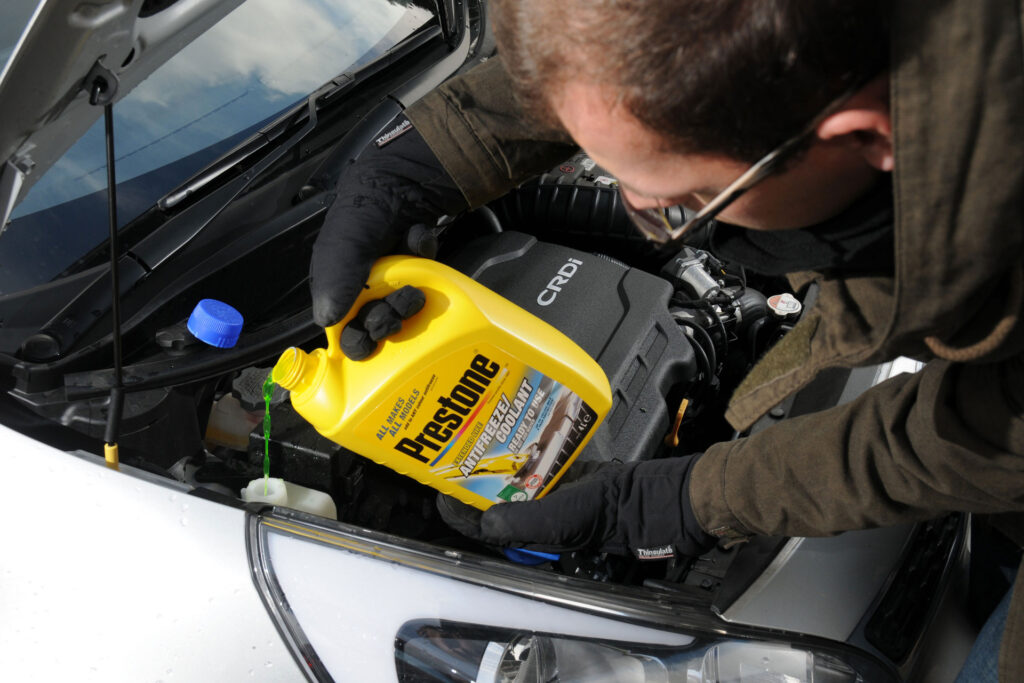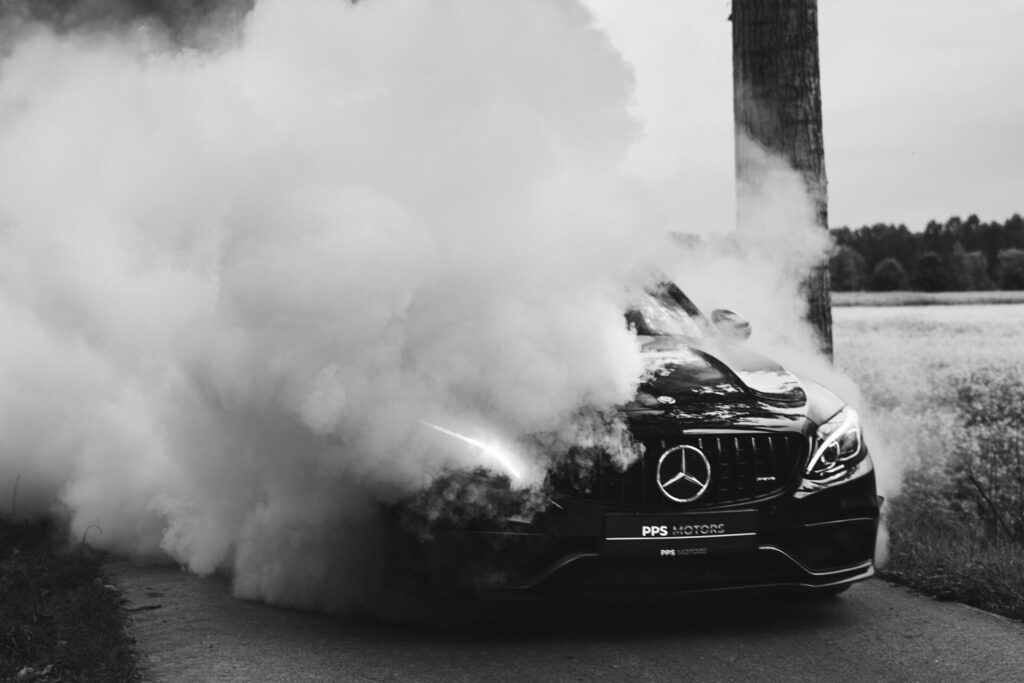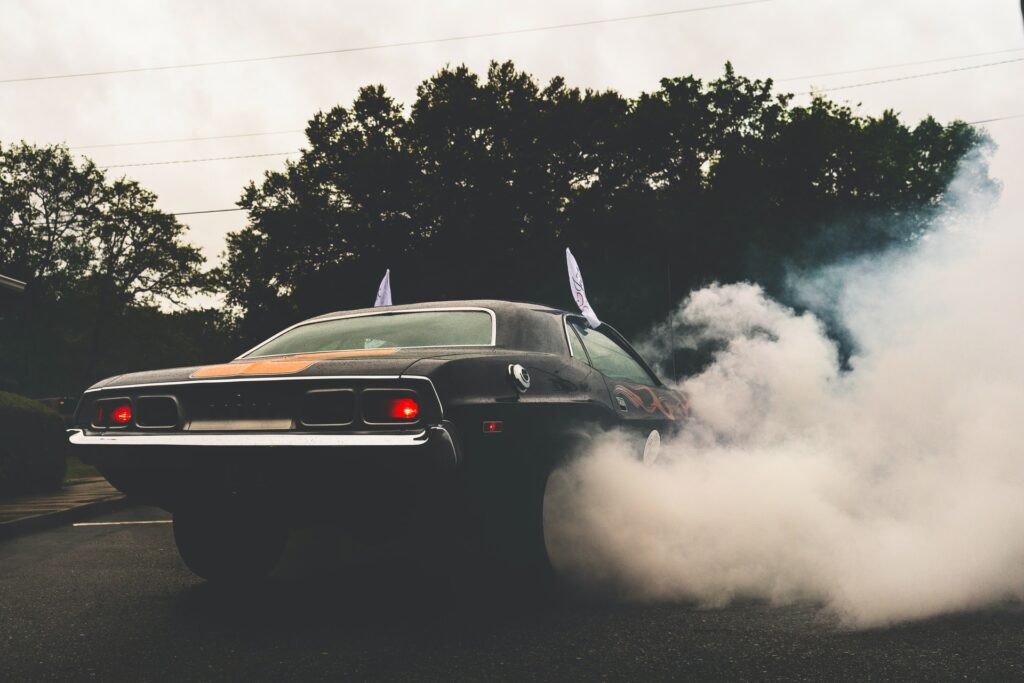What to Do When Your Engine Overheats
May 01, 2024

As an Amazon Associate, Modded gets commissions for purchases made through links in this post.
Summer is coming and the beautiful weather means more and more people will be out on the roads. Occasionally, though, the high temperatures also mean your engine will start overheating while you’re driving down the road or sitting in traffic. What should you do when your engine overheats? What about if your engine starts smoking?
First, What Not to Do
We’ll cover what you should do in a minute. First, here are a few things you shouldn’t do in the event your car starts overheating or smoking:
- Don’t panic. Get to the side of the road or a safe spot quickly, but don’t rush or put yourself or other drivers in danger.
- Don’t try to open your radiator cap. The pressure that builds up inside your cooling system should make the cap difficult to open, not to mention hot, and if you do open it, it can also throw boiling coolant all over you, resulting in severe burns.
How long does it take for a radiator to cool? Usually, waiting an hour or two is sufficient. However, you might need to give your vehicle additional time if you breakdown in the middle of the desert at high noon — as much as three to five hours.
Now that we’ve got that out of the way, let’s move on to what you need to do if your engine overheats.

What Causes Engines to Overheat?
Engines overheat for a number of reasons — problems with the thermostat, a faulty water pump, failure of a radiator fan, or a clogged radiator, and that’s just to name a few. Your engine maintains a lower operating temperature by the cooling system, which includes hoses, a radiator, a thermostat and various sensors that report to the engine control module, the computer under your hood. Any failure in any one of these things could cause the engine to overheat. Let’s take a closer look at three of the more common causes of cooling system failure.
1. Failed Thermostat
The thermostat is a simple switch that reacts to heat. When the engine is cold, it remains closed keeping the coolant in the engine. As the engine heats up, the thermostat opens and allows the coolant to flow into the radiator. If the thermostat is stuck closed, it can cause your engine to overheat because the refrigerant is trapped in the engine.
Swapping out a thermostat is pretty easy. Just remove the upper radiator hose, remove the thermostat housing, replace the thermostat and the gasket that sits between the housing and the engine block and replace the housing and hose. Thermostats, in most cases, will cost you less than $20.
2. Lack of Coolant
While your engine is cold, take a look at your coolant reservoir. If you don’t have enough coolant in your engine, it will overheat because there isn’t enough liquid to carry the heat away from the combustion chamber. The source of the leak might be obvious — especially if you’ve found puddles of antifreeze under your car as it cools — or it might be internal. If there are no apparent leaks, check your oil. White or milky oil is a sign that you’ve blown your head gasket and the coolant is leaking into your engine oil.

If there are no detectable leaks, you have enough coolant in your radiator and the engine is still overheating, you can also try including a coolant additive the next time you fill up your radiator. These lower the running temperature of your coolant, making your engine run up to 10 degrees cooler, preventing overheating.
3. Internal Clogs
Just because your radiator looks okay on the outside doesn’t mean the coolant is flowing freely. If the coolant can’t move, it’s going to continue to pull in heat until it can flash-boil inside your engine, doing damage to the cooling system and venting all your antifreeze.
Clogs can be small or large and can appear anywhere in the cooling system. The most common clogs are found in the radiator, as well as in the hoses that move the fluid too and from the engine block. This problem can be an easy fix. In many cases, all you need to do is flush out your cooling system with a regular garden hose. Radiator flush can also help because it adheres to the particles that can gather together and create clogs.
What to Look for When Your Engine’s Overheating
Newer cars are designed to shut off to protect your engine in the event it overheats, which can leave you stranded in the middle of the road if you’re not careful.
Here are a few things you can look at if your engine starts overheating:
- Are there any obvious leaks, either in the radiator, the hoses or the seals?
- Water level. Once your engine cools and the coolant returns to the reservoir, is it at the proper level?
- Locate your water pump with the engine running. Is the pully spinning freely? Is the belt spinning the pully properly or is it slipping?
- Are your radiator fans spinning? If the engine is overheating, the fans should be spinning to try to cool the engine.
If a quick inspection of the engine doesn’t yield any information, the problem may be harder to determine and might take a trip to your local garage.

Could You Have a Bad Radiator?
Engine overheating often occurs from radiator trouble. Fortunately, this repair is relatively easy to DIY on many older vehicles, although newer models may require a trip to the shop. Mechanics need specialized equipment to work on some engines, which few laypeople have in their garage. Signs it may be time for a new radiator include the following:
- Frequent engine overheating
- Coolant leaking beneath your vehicle
- Difficulty shifting
- Fluid discoloration
Sometimes, you can get away with simply swapping out the cap, which you can pick up for a few bucks at your local auto parts store. However, continuing to drive with an inefficient cooling system can lead to severe engine trouble, so please don’t ignore a trip to the shop if DIY fixes fail to address the problem.
Smoking Engines
If you notice smoke coming from under your hood, it’s safe to say it’s something that you should get checked out. Old seals, worn piston rings and a variety of other issues can cause smoking from under the hood of your car or from the tailpipe.
One issue that requires an immediate trip to the garage is a leak in your fuel line. Gasoline is a highly flammable substance, and a single spark could cause that stuff to ignite. If it’s sprayed around your car’s engine, a fire could erupt and burn to an impressive size or explode — if this occurs, immediately pull over, exit the vehicle and get clear.

Is a Smoking Engine Always Dangerous?
Typically, a smoking car engine warrants a trip to the garage. However, it may not spark immediate panic — or fire risk. How can you tell? Look at the smoke color.
Black smoke causes the most concern — it means there is raw fuel somewhere there shouldn’t be. You’re better off calling a tow truck. However, white, gray or bluish smoke usually indicates you can make it to the garage.
- White smoke indicates a coolant leak from a faulty gasket or lines. It’s usually wispy and looks like steam and has a sweet, pungent odor.
- Blue smoke denotes that your engine is burning oil. The issue might be leaky valves, worn piston rings or a plugged PVC valve. A common cause is overfilling the crank case — did you recently change or top off your oil? Have you gone too long between changes?
- Gray smoke pouring from your tailpipe signifies transmission fluid leaking into the intake manifold.
Changes In Modern Engine Technology
There’s a bright and dark side to today’s technology. First, the good news. Nearly every car on the market today comes equipped with an ODB-11 port that allows you to connect a computer to quickly detect the cause of your car’s overheating.
The best part? They have these nifty gadgets at nearly every O’Reilly or other major car repair retailer such as Napa. You can stop in and ask an associate to diagnose your issue — it may be something you can handle with a few products from their store.
Now the bad news. Today’s engines also contain different components and are often constructed in a way that makes DIY difficult, if not impossible. Although some states have implemented right-to-repair laws, some argue that sharing vehicle data makes it too available for hackers, raising safety concerns. While the battle continues to allow consumers to access all the mechanical data created by their cars to let them diagnose, maintain and repair their rides independently, you may have no choice in the meantime than to visit an authorized dealer and pay their prices.
Can’t Make It to the Garage?
If you’re unable to make it to the garage, there are a few products you can use to reduce leaks, improve engine performance and help make your car run a little smoother. Bar’s Leaks, for example, provides a troubleshooting guide to help you find the perfect product to suit your needs.
This walks you through your problem and shows a variety of products to seal, clean and even repair almost every system in your car. You don’t need to be a car expert to utilize these tools to keep your car running smoothly.
An overheating or smoking engine doesn’t have to signal the end of your road trip. Just keep this information in mind, don’t panic, and be prepared for anything.
Originally posted 5/2/2016 – Last updated 5/1/2024






